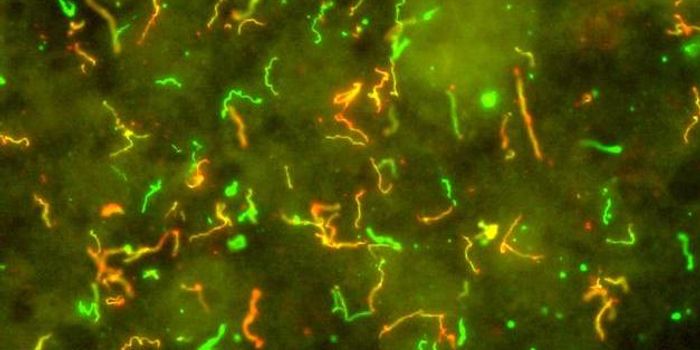Powerful New Photoreceptor Found in Roundworms
Researchers have found a new class of photoreceptor protein known as LITE-1 in invertebrates that could be up to 50 times more sensitive than rhodopsin is in the human eye.
Reporting in the journal Cell, the researchers have noted that the photoreceptor is reportedly linked to the sense of taste in the creatures, which happened to be roundworms known as nematodes in the study.

Image Credit: Wikipedia
Because these specific roundworms happen to be eyeless, these photoreceptors probably play a big role in their ability to detect light. Notably, as light was flashed at the creatures in the study, they would move the opposite way to get away from it, hence the theory.
More interestingly, they absorb two forms of light: UV-A and UV-B. Both have their disliked side effects and can be harmful to human skin, so this breathes new life into research for protecting against them.
“Photoreceptors convert light into a signal that the body can use,” study author Shawn Xu said. “LITE-1 is unusual in that it is extremely efficient at absorbing both UV-A and UV-B light—10 to 100 times greater than the two other types found in the animal kingdom: opsins and cryptochromes. The next step is to better understand why it has these amazing properties.”
LITE-1 reportedly has a drawback however, as its base protein cannot be split from its chromophore without rendering the photoreceptor completely useless. This isn’t the case with other photoreceptors in the animal kingdom, which can reportedly continue working in a diminished state even after the two are separated.
These photoreceptors could be important to study. Their harmful light ray absorbing qualities could help us to genetically engineer better ones in the future that could be used in improving existing technologies, like sunscreens.
Because the “genetic code” of these photoreceptor proteins are so much different than that of other photoreceptors found in the animal kingdom, there is a ton of untapped potential in this discovery.
It should be interesting to see if this goes any further in scientific development.
Source: Science Daily
-
MAY 07, 2024Is It Anti-RNP or Anti-Sm/RNP?
- See More
-
APR 30, 2024Immuno-Oncology Virtual Event Series 2024
-
MAY 07, 20243rd International Biosecurity Virtual Symposium
-
JUN 06, 2024The Future of Scientific Conferencing
- See More

















































